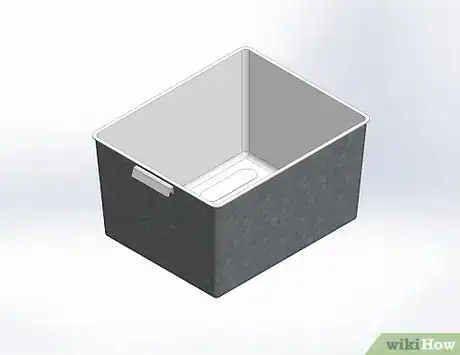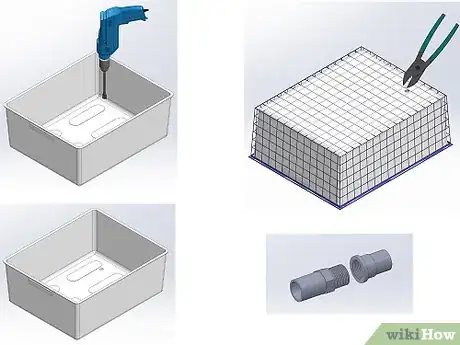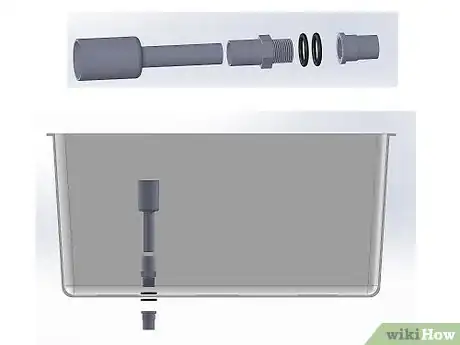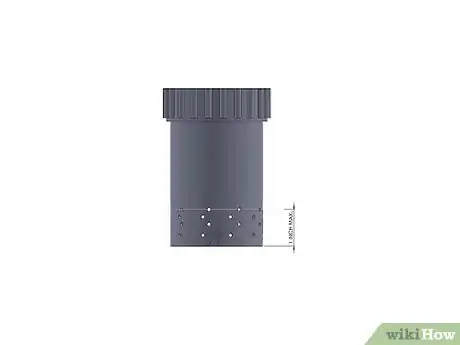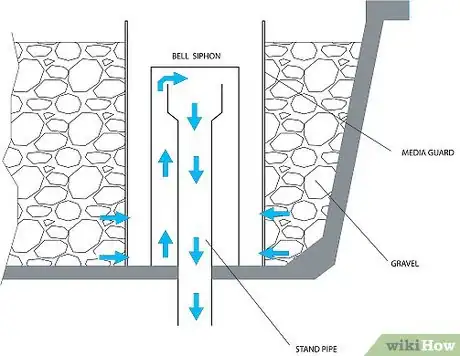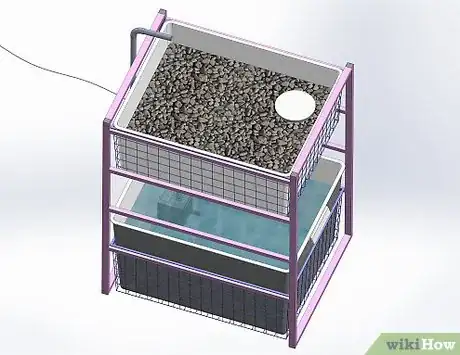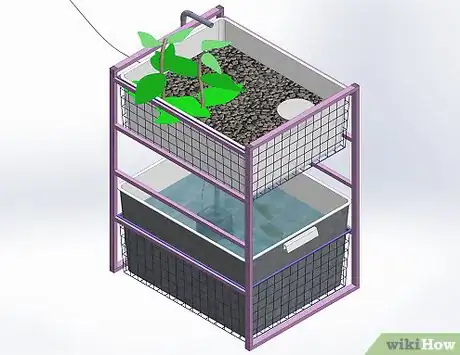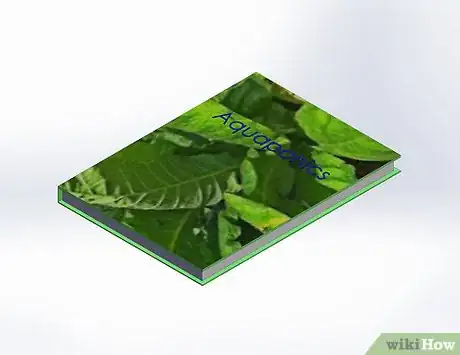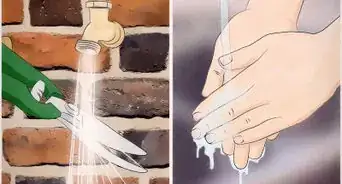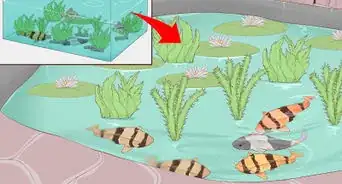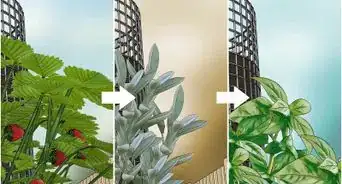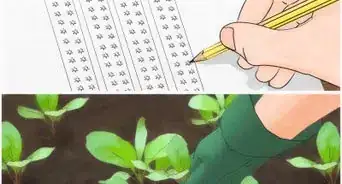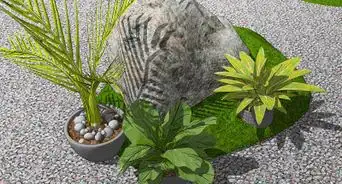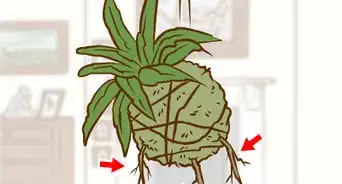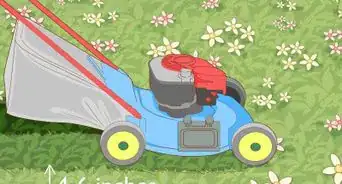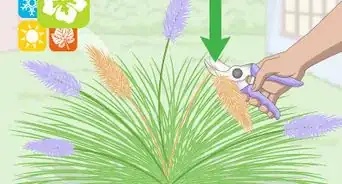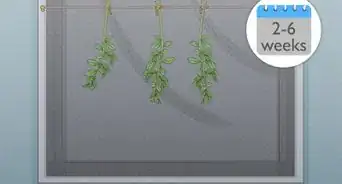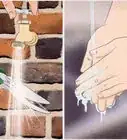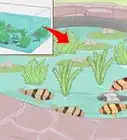wikiHow is a “wiki,” similar to Wikipedia, which means that many of our articles are co-written by multiple authors. To create this article, 22 people, some anonymous, worked to edit and improve it over time.
This article has been viewed 378,582 times.
Learn more...
Aquaponics is a method by which you grow plants and nurture aquatic animals together in a system that recirculates the nutrients produced, to the benefit of both plants and animals. The aquaponics approach is gaining in popularity as a sustainable gardening method and if you're curious to try it out for yourself, there are some great hacks for building your own system. This article is one such example using commonly available components from IKEA and a few extras from your local hardware store. The system looks good enough to keep in your living room or bedroom, just to keep your family happy!
Steps
Setting up the frame
-
1Visit IKEA to purchase the frame. You'll need the Antonius frame from IKEA for the main frame. It will be combined with one or two wire baskets and two of the plastic containers. Use the 50 liter (13.2 US gal) container for the fish tank at the bottom, and the 25 liter (6.6 US gal) container for the growbed at the top. Assemble all the parts based on the accompanying packaging instructions.
- If you can't find the frame at IKEA, ask around to see if friends have a spare one, or make a request on a site like Freecycle.
-
2Use the wire basket as support for the 25 liter (6.6 US gal) plastic container that will house the growbed. It is not strictly necessary to have the 50 liter (13.2 US gal) plastic container fish tank at the bottom if you just put the container on the floor. You may want to trim the plastic lip on the top container to ensure a better fit; in this tutorial, the handles have been cut off the ends of the container as well. However, this is not strictly necessary. To cut the plastic, use a small saw or some standard wire pliers.Advertisement
-
3If you want to personalize the system to fit in with your home décor, now is a good time to do it. The photo shows an example of a fish tank that has been decorated with a strip of PVC plastic sheet:
Plumbing Part 1: The standpipe
The plumbing for the aquaponics system is not too complicated and you can rely on a few basic principles to help make the system as efficient as possible.
-
1Use a small 600 lph (litres per hour) electric submersible pump in one corner of the fish tank which takes the water up to the growbed. The water flows through the growbed and exits in the opposite corner to which it entered. As the water then flows back to the fish tank, it pushes any solid waste over towards the pump, ready to pulled up into the growbed.[1]
- Use a bypass ball-valve on this system. This item diverts some of the water from the pump straight back into the fish tank. This lets you control the amount of water going into the growbed, and the diverted water also creates some water movement in the fish tank, as well as providing additional aeration. In this tutorial, 13mm PVC pipes were used throughout. Initially, it's recommended that you too start with the growbed and the siphon used here.
-
2Obtain male and female threaded adapters. Drill a hole in the right place in the growbed––you need to make sure that the female adapter will fit between the wire mesh squares. Make the hole about 6 or 7 centimeters (2.3-2.7 inches) from the edge of the container in each direction; the hole should form a snug fit with the threaded male adapter.
-
3Place the male adapter through the top of the growbed. Then fit a rubber O-ring onto the threads. Next, screw the female adapter onto the male adapter until you have a nice snug (and waterproof) fit. You can add some silicon to the bottom if you want to, but it's not strictly necessary. Finally, use a reducer on top of the male adapter. The one shown here is a 25mm to 13mm reducer.
- This whole piece is called the standpipe and this is how the water will exit the growbed. You want the overall height to be about 1 inch (2.5cm) under the top of your growbed media; thus, you will need to cut the pipe down so that it is the right height for you. At this point, let the silicon dry if you have used it.
- This whole piece is called the standpipe and this is how the water will exit the growbed. You want the overall height to be about 1 inch (2.5cm) under the top of your growbed media; thus, you will need to cut the pipe down so that it is the right height for you. At this point, let the silicon dry if you have used it.
Plumbing Part 2: The bell siphon and media guard
The bell siphon is a very effective method of slowly flooding the growbed and then draining the growbed quickly. It does this with a non-mechanical action, and has no moving parts to break.
-
1Observe the 25mm-13mm reducer on the far left of the photo shown below. This is where the water will exit the growbed.
-
2Place the 60mm bell siphon in the middle. This is a 60 mm piece of pipe with an airtight cap on the top. The pictured bell siphon shows some pieces cut out of the bottom as well as some holes drilled in the side––you want these holes to be no higher than about 1 inch (2.5cm) from the bottom of the pipe. The water will drain down to this level and will then stop.[2]
-
3Finally, the 100mm media guard, shown on the far right, is simply to keep the growbed media out of the bell siphon. This has holes drilled or cut out of it to allow the water to come in––and to keep the roots and the media out! The cap is optional, but helps to keep things out of the bell siphon.[3]
-
4Bell siphons can be tricky to get working. The mechanics of a siphon is relatively complicated, but you are really only concerned with the practical application of siphons to allow you to quickly empty a growbed into either a sump tank or fish tank using a simple mechanical method with no moving or electrical parts.
Finishing up
-
1Once you have all the framework, the containers, and the plumbing set up, add water into the fish tank and start the pump up. Test to see if everything works properly, and to see if the system is watertight!
-
2Fill the top container (the growbed) with some sort of growing media. This could be hydroton, lava rock, perlite, river stones or other similar matter. Use something that allows the water to flow through the growbed and is non-toxic.
-
3Once this has been done, you are ready to add the fish and to start putting plants into your system. Initially, add only a couple of small fish, just to start producing the ammonia needed to kickstart the system.
-
4Read up on aquaponics for more details. Setting up your system is just the beginning––you'll need to keep learning more about the use and benefits of the system to make the most of it. As such, it's recommended that you check out additional information on how to actually run your system and to gain a thorough overview in how aquaponics works properly. You can search for more resources online, purchase books about aquaponics or visit your local library to request further information.
Community Q&A
-
QuestionWhere can I purchase the containers to fit in the baskets?
 Community AnswerRubbermaid containers from Walmart or old refrigerator drawers would be a quick and simple option. You can also try this: at the T-joint where you will position the flow valve to control the amount of water going into the plant bed, put a small screw-together, removable section of pipe so that you can put some sort of filter media in it (sponge-like would be best), so that the fish waste intended for the plant bed does not go directly back into the fish tank. Only put this filter in after the T-joint on the side is going directly back into fish tank. Make sure this section is removable for cleaning.
Community AnswerRubbermaid containers from Walmart or old refrigerator drawers would be a quick and simple option. You can also try this: at the T-joint where you will position the flow valve to control the amount of water going into the plant bed, put a small screw-together, removable section of pipe so that you can put some sort of filter media in it (sponge-like would be best), so that the fish waste intended for the plant bed does not go directly back into the fish tank. Only put this filter in after the T-joint on the side is going directly back into fish tank. Make sure this section is removable for cleaning. -
QuestionCan I make an indoor aquaponics system if I have a cat?
 Community AnswerYes, just be careful. They are curious creatures and will try to get into everything. I suggest you don't plant anything harmful to cats, and keep an eye on any interest in catching fish.
Community AnswerYes, just be careful. They are curious creatures and will try to get into everything. I suggest you don't plant anything harmful to cats, and keep an eye on any interest in catching fish. -
QuestionWhat should I put in the garden tank to hold the plant?
 Community AnswerI would recommend using leca. It's cheap and supports the bacteria that is needed to break down the nitrates from fish waste. It is also light and absorbent, so it can hold a lot of water without collapsing the shelf.
Community AnswerI would recommend using leca. It's cheap and supports the bacteria that is needed to break down the nitrates from fish waste. It is also light and absorbent, so it can hold a lot of water without collapsing the shelf.
Warnings
- Make sure that all your plumbing is pushed together tightly in order to avoid any leaks. The systems shown in this tutorial are not glued as a firm push is usually sufficient!⧼thumbs_response⧽
References
- ↑ https://www.youtube.com/watch?v=YC5RGUUXxJE
- ↑ https://www.youtube.com/watch?v=YC5RGUUXxJE
- ↑ https://www.youtube.com/watch?time_continue=2&v=B4l3VJFestY
- ↑ The Ball-valve Bypass as well as other aquaponics plumbing principles and practicalities can be seen here: http://www.japan-aquaponics.com/plumbing-guide-part-2.html


